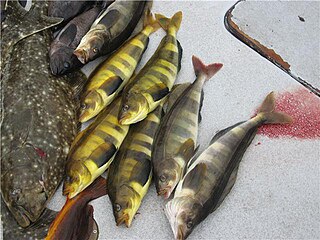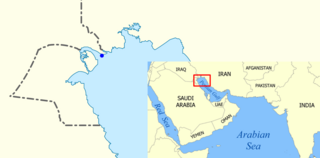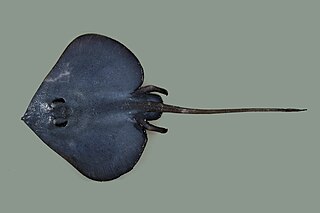
The Squaliformes are an order of sharks that includes about 126 species in seven families.

The electric rays are a group of rays, flattened cartilaginous fish with enlarged pectoral fins, composing the order Torpediniformes. They are known for being capable of producing an electric discharge, ranging from 8 to 220 volts, depending on species, used to stun prey and for defense. There are 69 species in four families.

An egg case or egg capsule, often colloquially called a mermaid's purse, is the casing that surrounds the eggs of oviparous chondrichthyans. Living chondricthyans that produce egg cases include some sharks, skates and chimaeras. Egg cases typically contain one embryo, except for big skate and mottled skate egg cases, which contain up to 7 embryos. Oviparity is completely absent in the superorder Squalomorphii. Egg cases are also thought to have been produced by some extinct chondricthyan groups, such as hybodonts and xenacanths.

Rajiformes is one of the four orders in the superorder Batoidea, flattened cartilaginous fishes related to sharks. Rajiforms are distinguished by the presence of greatly enlarged pectoral fins, which reach as far forward as the sides of the head, with a generally flattened body. The undulatory pectoral fin motion diagnostic to this taxon is known as rajiform locomotion. The eyes and spiracles are located on the upper surface of the head and the gill slits are on the underside of the body. Most species give birth to live young, although some lay eggs enclosed in a horny capsule.

The New Zealand smooth skate is a skate of the genus Dipturus, found around New Zealand at depths between 15 and 1,300 m.

Bathyraja is a large genus of skates in the family Arhynchobatidae.

Raja, also known as raia, is a genus of skates in the family Rajidae containing 16 species. Formerly a wastebasket genus, many species historically categorized here have been moved to other genera in the family, such as Amblyraja, Beringraja, Dipturus, Leucoraja and Rostroraja. Raja are flat-bodied, cartilaginous fish with a rhombic shapes due to their large pectoral fins extending from or near from the snouts to the bases of their tails. Their sharp snouts are produced by a cranial projection of rostral cartilage. The mouth and gills are located on the underside of the body. They may be either solid-coloured or patterned, and most skates have spiny or thorn-like structures on the upper surface, while some species contain weak electrical organs within their tails. Mating typically occurs in the spring and the female lays numerous eggs per clutch which are encapsulated in leathery cases, commonly known as "mermaid’s purses". Species vary in size, ranging from about 40 to 140 cm (1.3–4.6 ft) in length. These bottom-dwellers are active during both day and night, and typically feed on molluscs, crustaceans and fish. Raja skates are found in the East Atlantic, also in the Mediterranean, and western Indian Ocean, ranging from relatively shallow water to a depth of 800 m (2,600 ft). Skates and related species have fossil records dating from the Upper Cretaceous period, thus this well-adapted species is quite ancient.

Leucoraja is a genus of hardnose skates in the family Rajidae, commonly known as the rough skates. They occur mostly on continental shelves and slopes in the north-western and eastern Atlantic Ocean, the Mediterranean Sea, the south-western Indian Ocean, and Australia.
Pavoraja arenaria, commonly known as the sandy skate or yellow skate, is a species of fish in the family Arhynchobatidae. It lives in depths ranging from 192 to 712 meters but is usually found at 300 to 400 meters depth off the coast of western Australia. Its maximum size is 34.3 cm (13.5 in) total length. It is a little-known species that could be threatened by being taken as by-catch in trawl fisheries.

The Atka mackerel is a mackerel in the family Hexagrammidae. Atka mackerel are common in the northern Pacific Ocean, and are one of only two members of the genus Pleurogrammus - the other being the Arabesque greenling. The Atka mackerel was named for Atka Island, the largest island of the Andreanof islands, a branch of the Aleutians.

Breviraja, commonly known as lightnose skates, is a genus of small skates in the family Rajidae. They are found in deep water of the western Atlantic, including the Gulf of Mexico.

Batoidea is a superorder of cartilaginous fishes, commonly known as rays. They and their close relatives, the sharks, comprise the subclass Elasmobranchii. Rays are the largest group of cartilaginous fishes, with well over 600 species in 26 families. Rays are distinguished by their flattened bodies, enlarged pectoral fins that are fused to the head, and gill slits that are placed on their ventral surfaces.
Chalaroderma is a genus of combtooth blennies found in the southeast Atlantic ocean.
Chalaroderma capito, the looseskin blenny, is a species of combtooth blenny found in the south Atlantic ocean where it is found from Saldanha Bay to East London in South Africa. This species reaches a length of 20 centimetres (7.9 in) SL.
Jensen's skate, also known as the shortail skate, is a poorly known species of fish discovered in 2004 during a study of bottom ichthyofauna aboard the Norwegian RV G.O. Sars, where four species were identified, including A. jenseni.
The Korean skate is a skate in the family Rajidae, and is the sole member of the genus Hongeo. It was previously classified in the genus Raja as Raja koreana until discoveries identified this species as a member of a distinct genus. It is considered Critically Endangered on the IUCN Red List due to overexploitation.

The pita skate is a medium-sized skate in the family Rajidae. The holotype and only known specimen was found in the northern Persian Gulf, in Iraqi waters. It was collected at a depth of less than 15 m (49 ft).
Insentiraja laxipella, commonly known as the eastern looseskin skate, is a small deep-water skate in the family Arhynchobatidae. Its known range includes only the continental slope off Queensland.

Fenestraja plutonia is a species of cartilaginous fish in the family Gurgesiellidae. It is commonly known as the underworld windowskate or Pluto pygmy skate. The underworld windowskate is known from patches of continental slope in the western Atlantic Ocean between the coasts of the southern United States and Suriname.

Insentiraja subtilispinosa, commonly known as the western looseskin skate or velvet skate, is a common deep water skate in the family Arhynchobatidae.













